“The Twelve Days of Christmas” is not only an enduring holiday tune, but also one that has given rise to endless analysis. The peculiar list of gifts just lends itself to questions, one of the most popular being: What would that all cost today? (It’s $41,205 this year, according to the Christmas Price Index, an economic analysis project that calculates the cost each year. Seriously.)
The song was first published in England in 1780, although it likely originated as a folk song much earlier than that. It may well have started as a memory game at parties. It underwent many revisions, and most early versions did not include the music. The version many of us are familiar with is a 1909 arrangement.
As a naturalist, one of my ongoing interests is how wildlife is portrayed in popular culture, movies and songs. It may be odd, but I can’t help myself. And “The Twelve Days of Christmas” is, well, very birdy. Half the gifts are avian in nature.
But the most interesting is the first. What is up with the partridge in a pear tree?
More specifically: What bird is that partridge? The answer to that may be less straightforward than you think. Because the partridge label has been applied to a lot of different birds. Most of which, by the way, do not particularly like trees.
So let’s take a look at some partridges (and birds incorrectly labeled as partridges), with some light natural history and conservation for good measure. And, for fun, I’ll look at which ones might be most likely to be found in a pear tree.
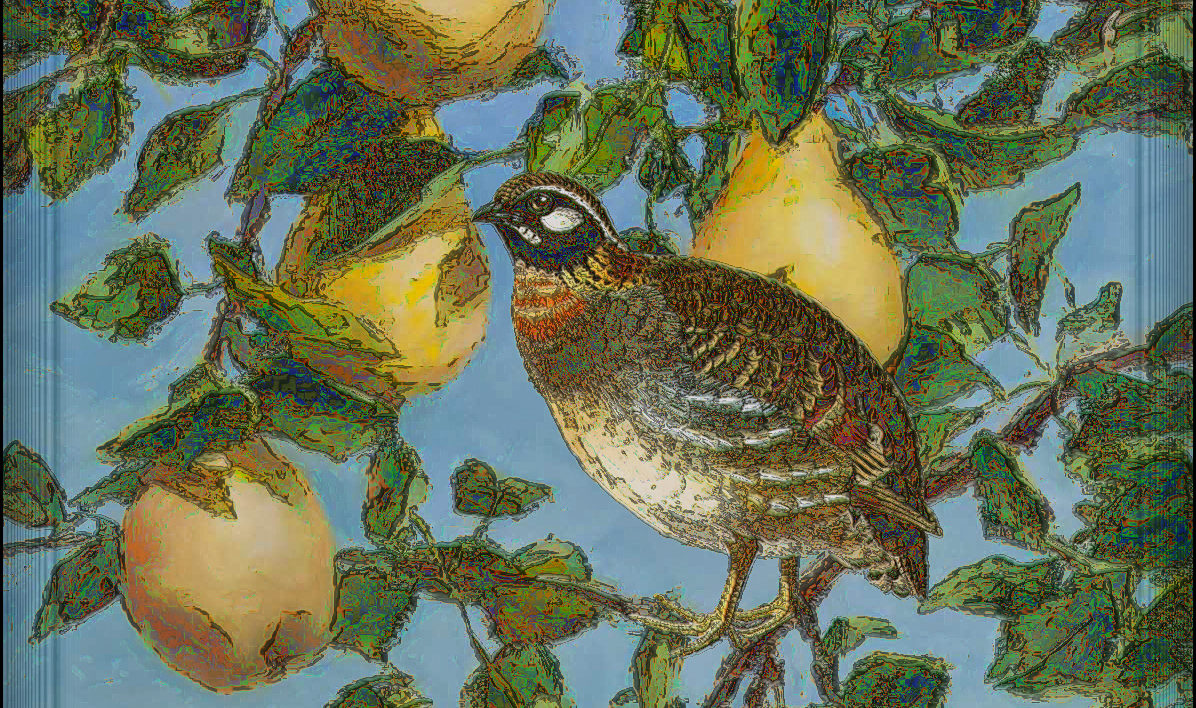
What’s In a Name?
What exactly is a partridge? There are at least 46 birds with “partridge” in their accepted common name. They are mid-sized ground-dwelling, ground-nesting birds. All are members of the taxonomic order known as the Galliformes, which also includes pheasants, chickens, turkeys, quail, peafowl, guinea fowl and quail. This is a well-known group of birds. They appear frequently in myth and story.
At one point, partridges were all considered a part of the subfamily, Perdicinae, but this is no longer considered a valid subfamily. The partridge label applies to birds generally between a quail and pheasant in size. All species are found in Eurasia and Africa. In any case, there are a lot of potential candidates to be the partridge in the pear tree.
To further confuse matters, Europeans have had a tendency to label just about any game bird they encountered a “partridge.” Several North and South American species are often called partridges, even though they are not.
Partridges are charismatic birds. Most artistic renditions of “The Twelve Days of Christmas” don’t do the bird justice. So let’s look at various partridges – genuine or not – and assess their holiday potential.
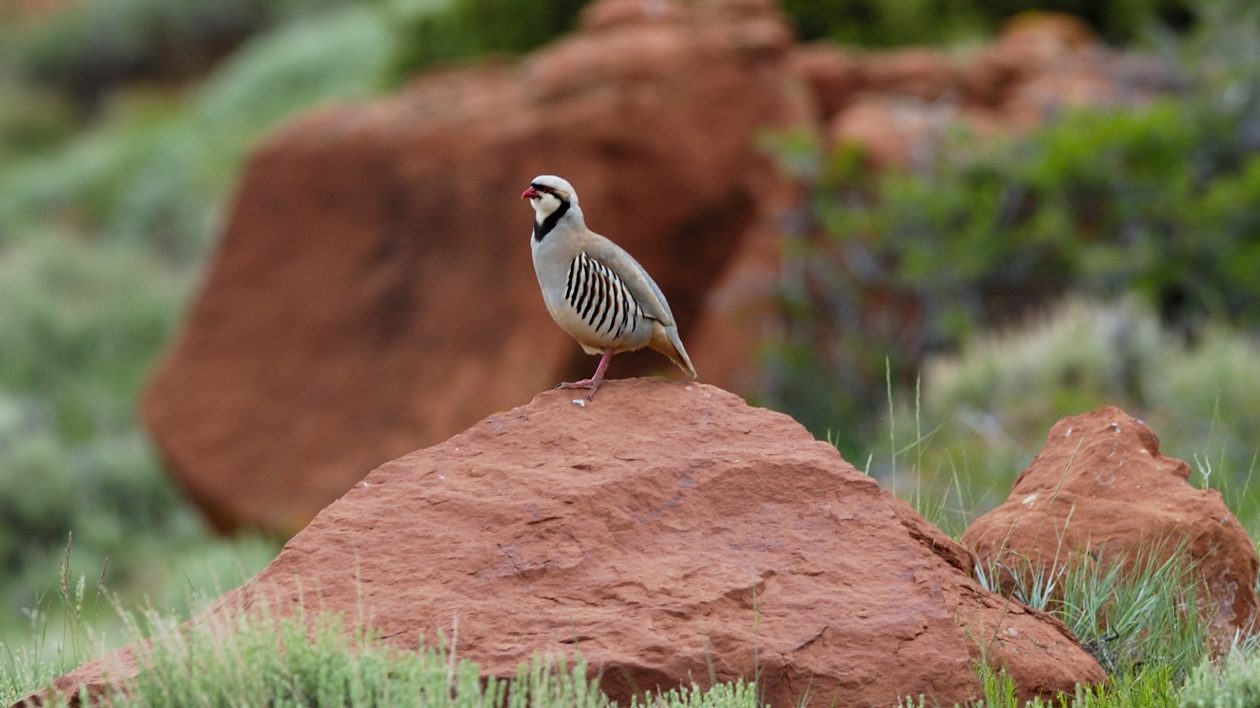
Chukar
The chukar may be the quintessential partridge: a plump bird often found in open, grassy country. The chukar flies fast, but more often it runs across rocky terrain.
It has a wide range across Eurasia and its popularity as a gamebird means it has been introduced widely. I see large flocks near my home in southwestern Idaho. You can often hear them calling from rocky canyons. Interestingly, they eat cheatgrass, an invasive weed that has overtaken way too much sagebrush country in the western United States. I see few birds in cheatgrass monoculture, but I do see large flocks of chukars.
Pear Tree Potential: Not going to happen. You will see chukars calling from large rocks, but not from trees.
As a side note, early versions of “The Twelve Days of Christmas” used a juniper tree instead of a pear tree. Junipers are often found in association with the grassy, rocky country inhabited by both native and non-native chukars. However, chukars (and native sage grouse) avoid going near junipers, as they provide perches for raptors.
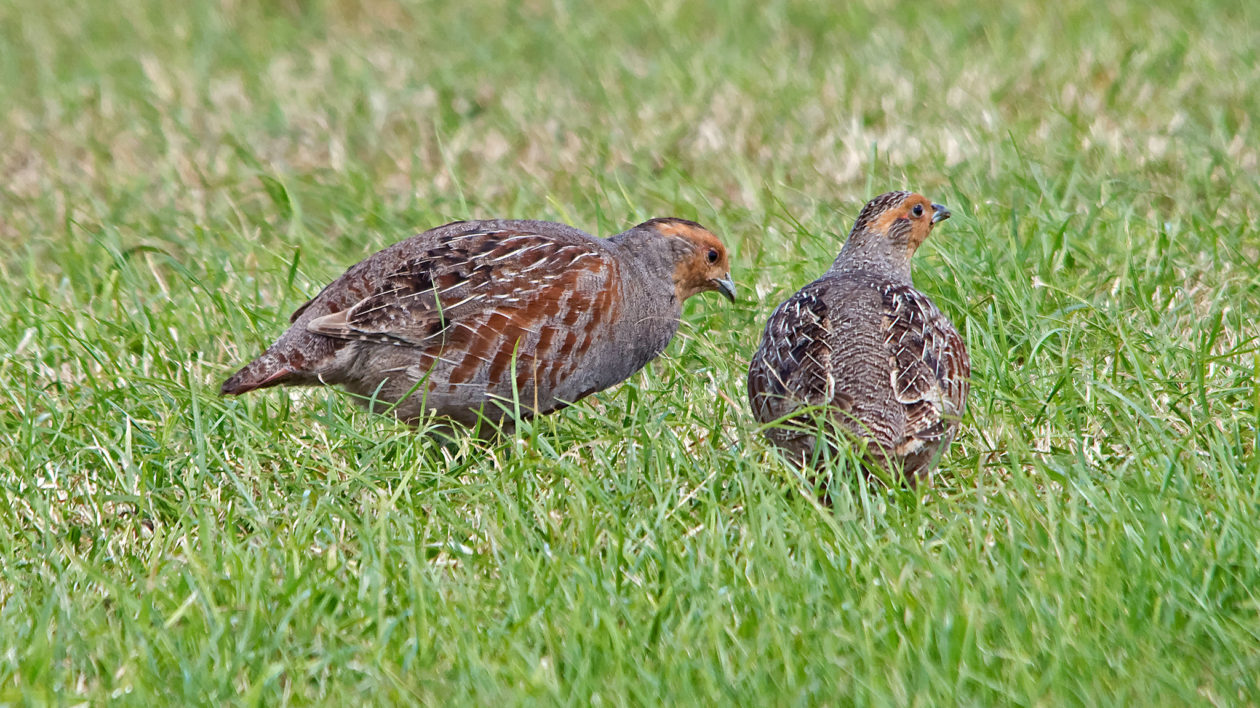
Gray Partridge
The gray partridge is the most common partridge of Europe and the United Kingdom, where it is often found on farms and stocked for hunting. It too was introduced to a number of places in North America, and today it can be found on fallow farm fields and grasslands in the Midwest and Rockies. They are often called Hungarian partridge here.
I often find them near chukars. While they aren’t in the rocky canyons, they are quite common in open, cheatgrass-covered fields. Chukars have a reputation for being very wary birds, but I often am able to observe them from a canyon campsite or while out hiking.
But I almost never get a relaxed viewing of gray partridge. Usually a covey bursts out as I’m walking, leaving me only a glimpse as they noisily fly away. Few people seem to notice them, even though they’re common.
Pear Tree Potential: Maybe, maybe not. This is the partridge that would have been most familiar to the originators of the song. So it’s the likeliest candidate. Unfortunately, gray partridge aren’t associated with trees. At all. I have never seen a gray partridge within 100 yards of a tree.
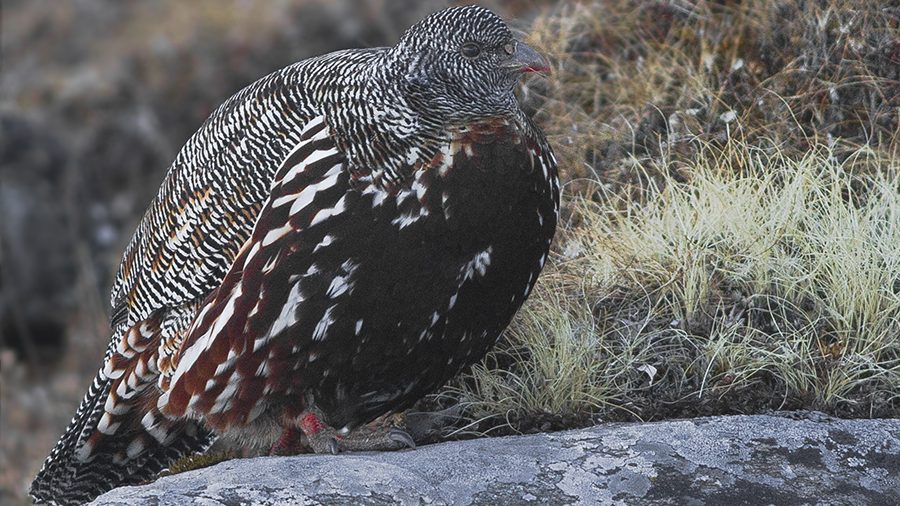
Snow Partridge
This is a particularly beautiful partridge, found in the higher Himalayas above 9,000 feet elevation. It often lives in open habitat at the edges of glaciers.
The wonderful reference Pheasants, Partridges and Grouse (Madge and McGowan) includes this appealing description: “Generally relatively approachable, exhibiting little fear of humans with which it has little contact in its harsh environment. Indeed it is often quite inquisitive, standing boldly on an exposed rock or ridge to watch admiring birdwatchers!”
Pear Tree Potential: None. The snow partridge is found above the tree line. It is far more likely to take cover by hiding in a cave than flushing into a tree.
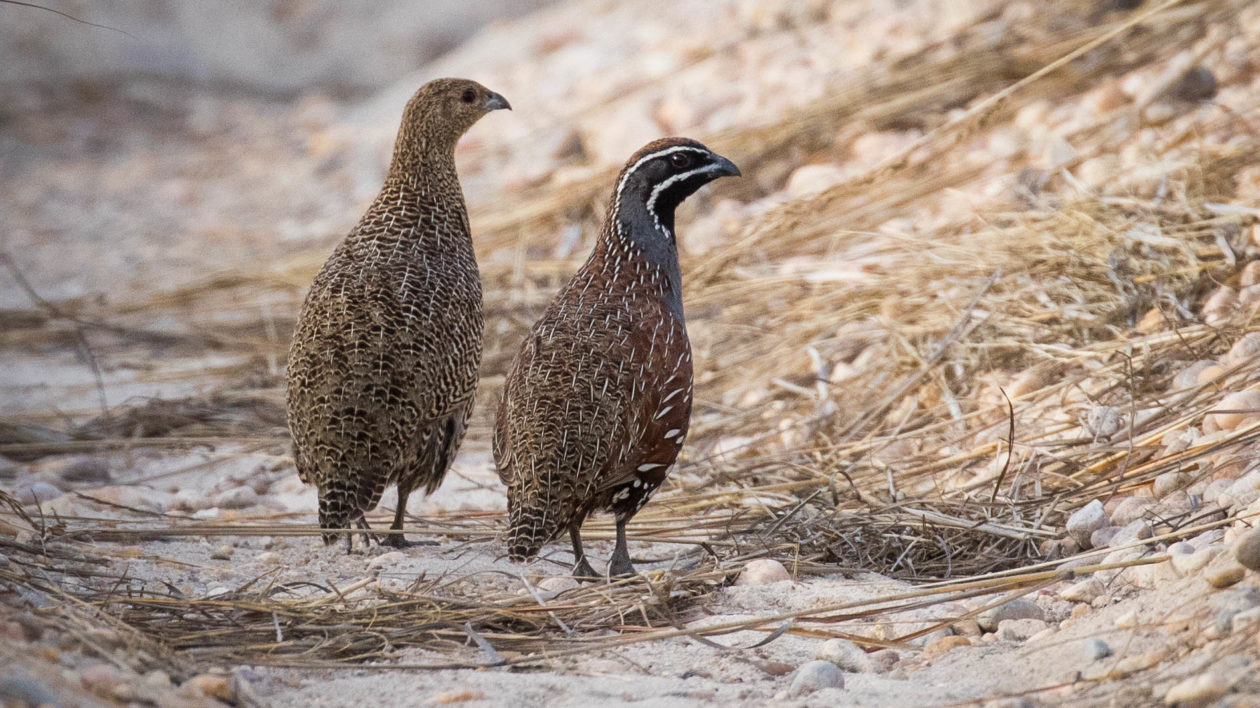
Madagascar Partridge
There are a great variety of cool and little-known partridges around the world. This one is endemic to Madagascar; males have striking coloration on their face and chest. It is the only species in its genus. In many ways it looks like a cross between a partridge and a quail.
Some experts believe it may be the closest bird to the ancestral species that gave rise to present-day partridges and quail. But the species is very little studied.
Pear Tree Potential: Not likely. The Madagascar partridge, like many species, lives in undergrowth. A trip to see one, though, would have to rank as one of the ultimate gifts for the nature nerd on your list. Just saying.
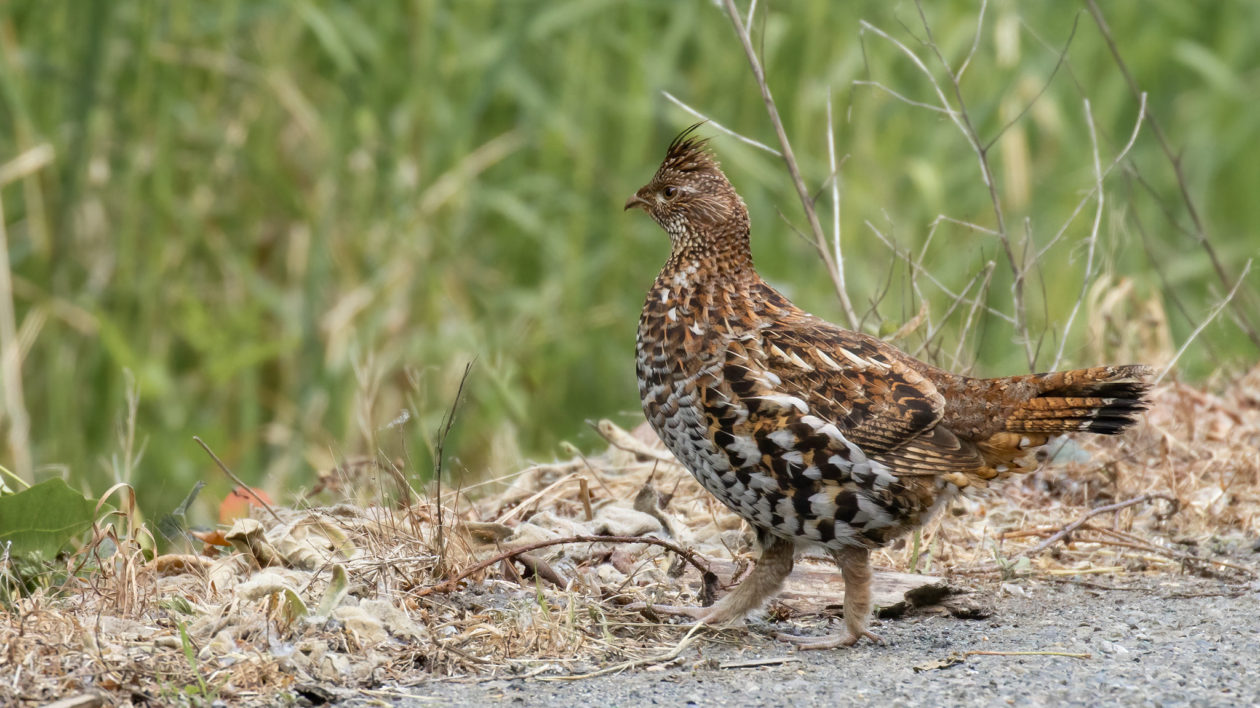
Ruffed Grouse
The ruffed grouse has never struck me as looking particularly like any of the partridges. But in the northeastern United States, and in particular New England, the grouse is often called the partridge. In bird hunting books and older sporting magazines, references to partridge (often spelled pa’tridge) mean ruffed grouse.
The ruffed grouse would not have been mentioned in a 1700s European folk tune, but perhaps it’s a better fit. I associate ruffed grouse with walks in winter woods, often scaring me witless when they go thundering out of a pine tree.
Ruffed grouse are also known for making “snow angels.” When the snow is deep, grouse seek cover under it.
The ruffed grouse flies along and dive bombs head first into deep, fluffy snow – completely submerging itself. Its body heat then creates a sealed dome under the snow: essentially, its own igloo. This structure allows the grouse to stay warm even in the most inclement conditions. Research shows that the snow shelter can warm to 32 degrees Fahrenheit, and rarely drops below 20 degrees — even when it’s much colder outside.
When they flush, they burst through the snow, leaving behind a bird-like “snow angel” as a sign.
Pear Tree Potential: Very good. The ruffed grouse may not be a real partridge. But it roosts in trees, and has an affinity for abandoned orchards.
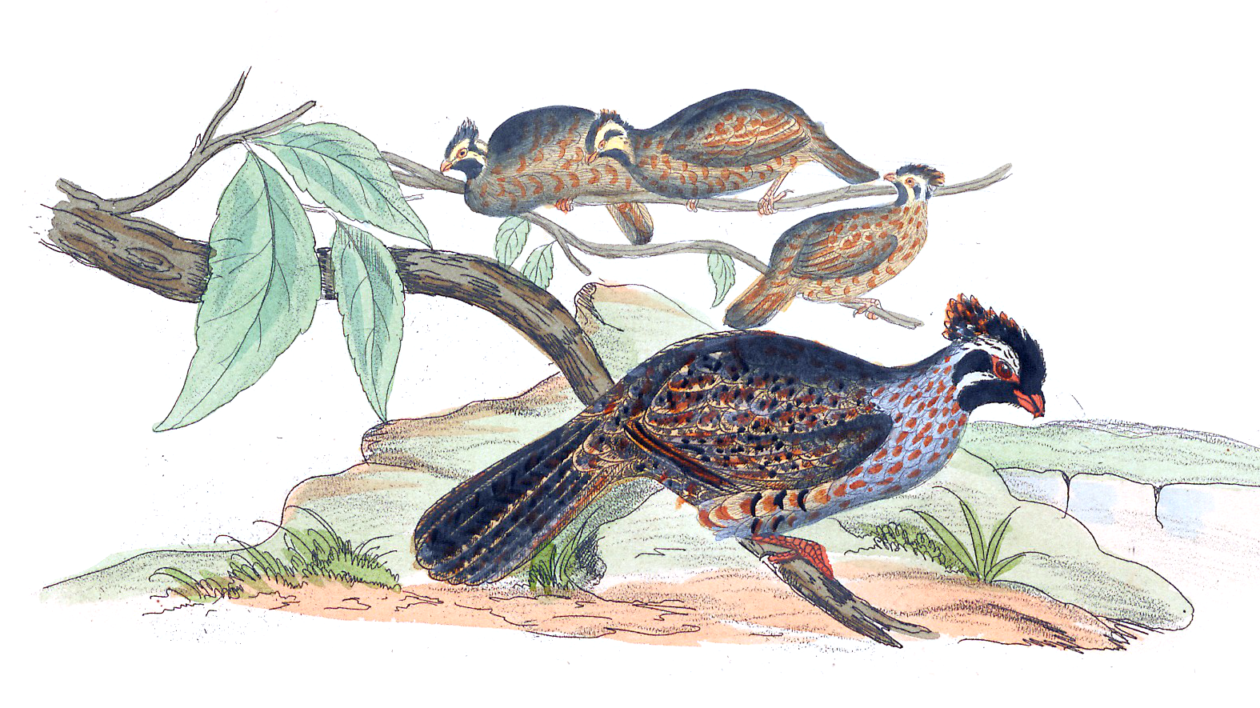
Long-Tailed Tree-Quail
The Americas are home to a number of species of quail. In general, they’re smaller than partridge but definitely bear a distinct resemblance. The quail of the United States are quite familiar to most birders, but the tree-quails are not.
This interesting bird is commonly called the long-tailed partridge. Found in montane forests in Mexico, it is likely declining due to deforestation. The long-tailed tree-quail is a striking example that, even among charismatic birds, most of us know only a relatively small number of species.
Pear Tree Potential: Marginal. The long-tailed tree quail looks quite partridge-like. It is often found in dense forests. But it prefers to stay on the ground, in the undergrowth.
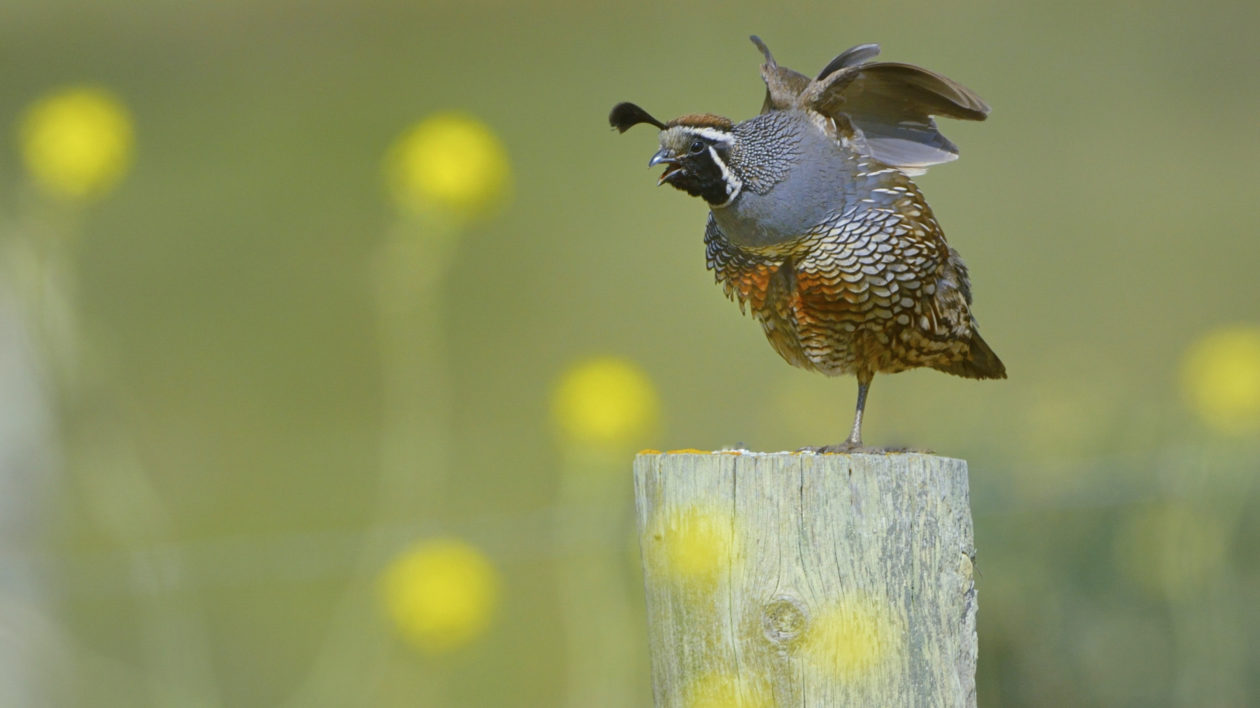
California Quail
Another quail that is sometimes colloquially called a “partridge” is the northern bobwhite. As is the case for the ruffed grouse, this can be seen in historic hunting literature.
I have not heard this label applied to most other North American quail species. Interestingly, though, many arts-and-crafts depictions of the “Twelve Days” include a partridge that has a top knot. The top knot is that feather that sticks out from the bird’s head. That’s a quail, but not a bobwhite. These artistic depictions almost invariably look like California quail.
A flock of California quail is scratching around my backyard as I write this. They are a cheery bird on a winter day, and it’s easy to see why someone might use one as a designated “partridge.” Unlike many quail, they are quite adaptable to humans, too. In Idaho, they are commonly found in suburbs and urban backyards.
Pear Tree Potential: Excellent. California quail are often already substituted for partridges in “Twelve Days” artwork. Plus, these quail roost in many kinds of trees. They often use high perches for calling and assessing danger.
Hopefully, you now have some festive birds to imagine the next time you hear that song. Now, what about those “calling birds”? What species are they? This one may actually be easier to answer. But that will wait for a future blog.
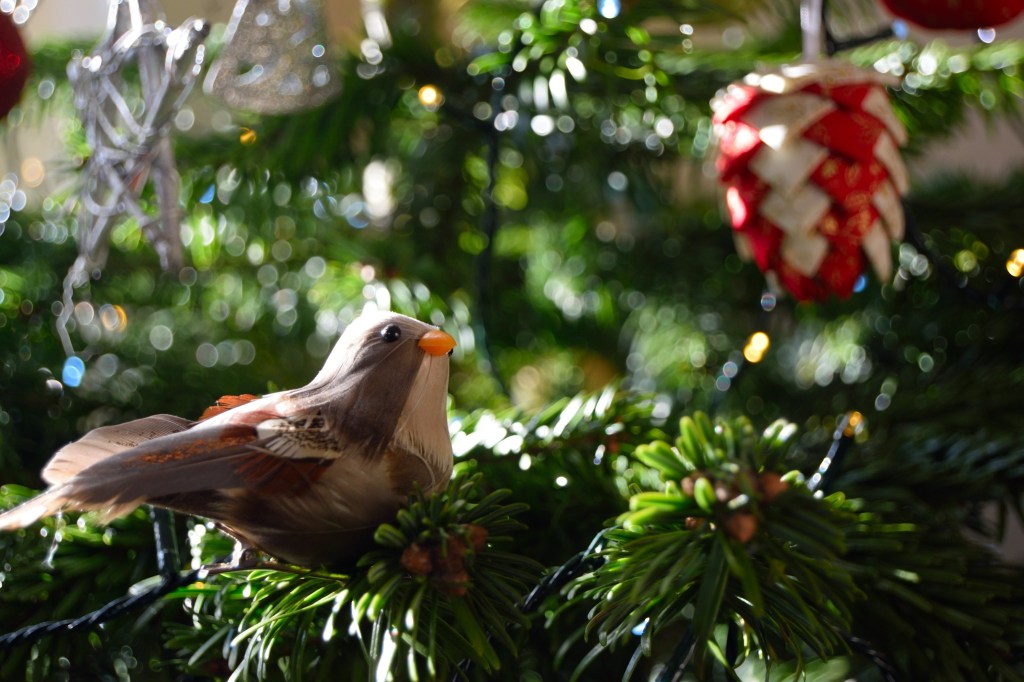



Every day is the first day of Christmas in my Sierra Nevada home. I have a partridge in a pear tree nearly every day of the year. I recently moved to an aging pear and apple orchard. Last summer there were about 20 quail families (about 15 babies in each family) that strutted outside my bedroom window in the morning, marching down the narrow hillside, and finally spilling out to spread across the pear orchard as the sun reached it’s heights. I sip my coffee and gaze at the males perch in the highest branches of the trees, watching over their 15-or-so babies that forage below. When the red tail and Coopershawk are sited – swoosh! The sound of hundreds of quail wings fluttering across the pond to take cover in the blackberry brambles, vinicas, and iris that grow in the dense forest below. I can attest that California Quail dearly love a pear tree, and are quite happy to perch there as often as possible.
Actually haha, I’ve taken photos today of a red leg partridge (the beautiful one that is depicted in the song & all the illustrations) in our apple tree. Up high. He lives here with his female and has been up in the fruit trees all day. Happily grooming, and resting. I can email a photo if you’d like. So I’ve come to refute that it’s just a myth. I think it’s more possible than we thought 🙂
I grew up in southern Oregon’s pear country, and also frequently saw California Quail, well, all over the place, in fields and alongside roads, in the brush and sparse woods of our valley and hills. They are sweet creatures, quite charming to watch, especially when they had a string of miniature versions of themselves a-tow. But I never saw one in a pear tree. Ever. I saw them sometimes in the lower branches of brush when they were “hiding”, but not for long.
Like most folks my age, “The Twelve Days of Christmas” was standard caroling fare, and we all knew the words to every verse (and still do). We never could figure out what the heck a partridge was doing in any tree, let alone a pear tree. We finally decided that the song wasn’t about anything real, it was just a fun song to sing, and that line was simply for the alliteration of the “P’s. BTW, the idea of it starting as a memory game rings true: for us as youngsters there was a kind of competition. And even the tune seems the kind of thing that might develop out of the sing-songy way memorized things often are learned.
Interesting story, all around. Thank you for exploring it.